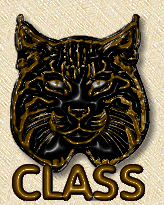|
Abyssinian
Temperament:
*Attention Demanding
*Intelligent
*Extremely Active
*Freedom Loving
"Abyssinians are loyal and very affectionate"
|
| Head: Slightly
wedge shaped but rounded; medium length nose |
| Eyes: Large,
almond shape; green, hazel, or gold |
| Ears: Large,
pointed; wide-set |
| Body: Intermediate;
muscular yet slender; elegantly arched neck |
| Coat: Short,
soft, dense, and resilient; each hair "ticked" with two or three
bands of color |
| Tail: Long
and tapering; dark tipped |
| Patterns: Reds,
browns, and ivory |
Breed History: The
abyssinian is known as "the child of the Gods" because legends tells
that it is descended from the sacred cats worshipped in ancient Egypt.
However, some believe that the "Aby" originated on the coast of the
Indian Ocean. The most common theory on its origins is that British Soldiers
discovered these cats in North Africa during the Abyssinian War in the 1860's
and brought them back to England.
According to most records, the first Abyssinian to reach England was Zula
(named for the place where the British troops landed in Abyssinia), who was
given to the wife of a British soldier. Zula and her cousins were bred with
other cats displaying similar markings.. and the Aby breed was formally
recognized in 1882. In 1900, authorities decided that Abys resulted not from
selective breeding, but from chance matings among typical ticked tabbies. For
several years after, the Abyssinians lost their recognition and were called
"ticks", "British Ticks", or "Bunny Cats".
However, by the end of the 1900's the Aby had regained its former Breed
Status.
Abyssinians were introduced into the United States in the early 1900's, and
are now extremely popular. Since the litters tend to be small, and mostly
male, they are a very expensive breed. |
| Additional Notes: |
|

|
|

|
|

|

|

|
|